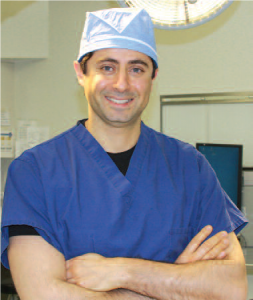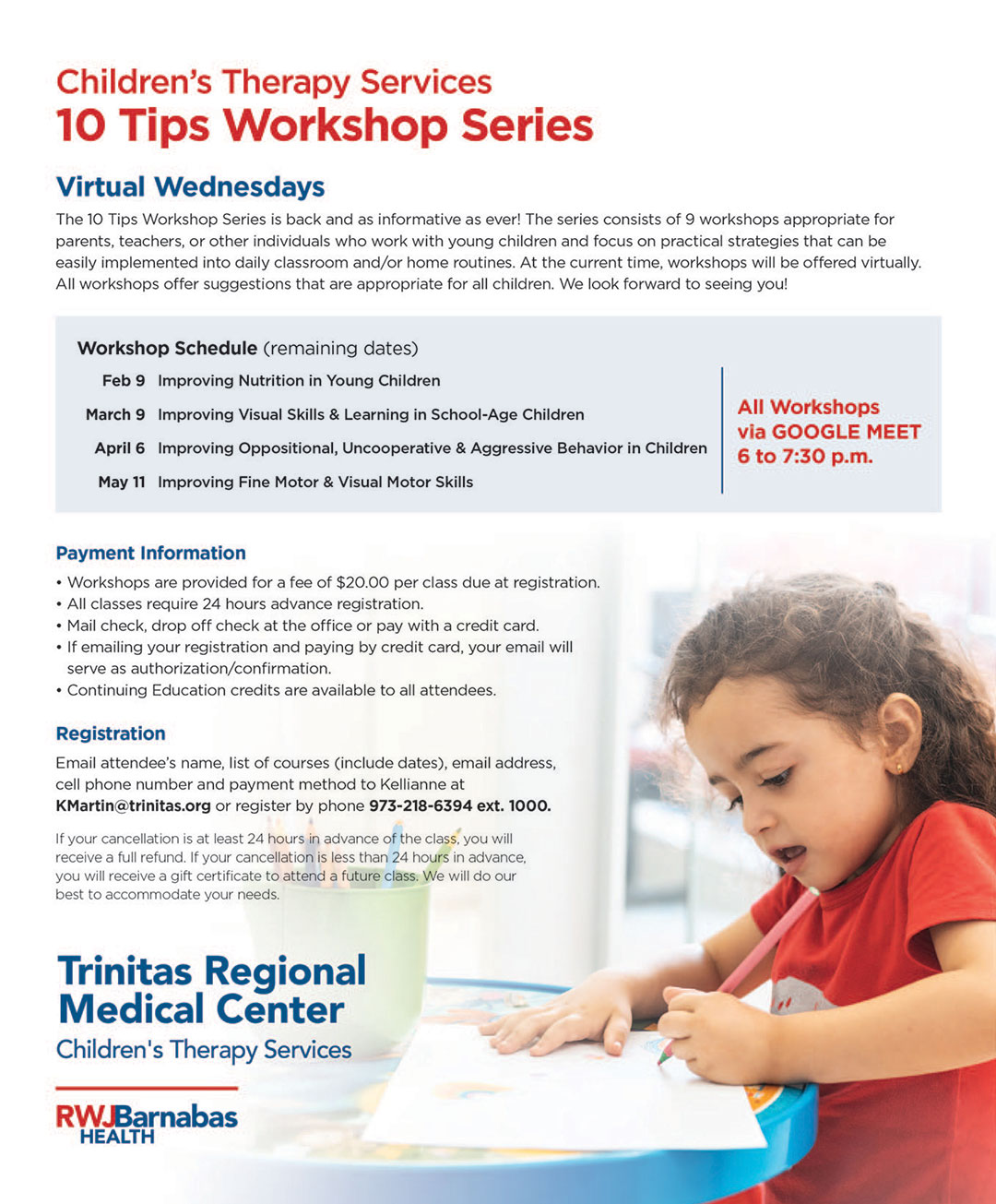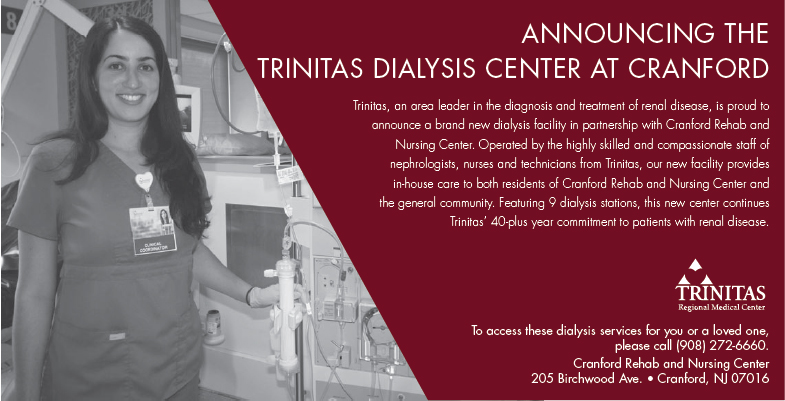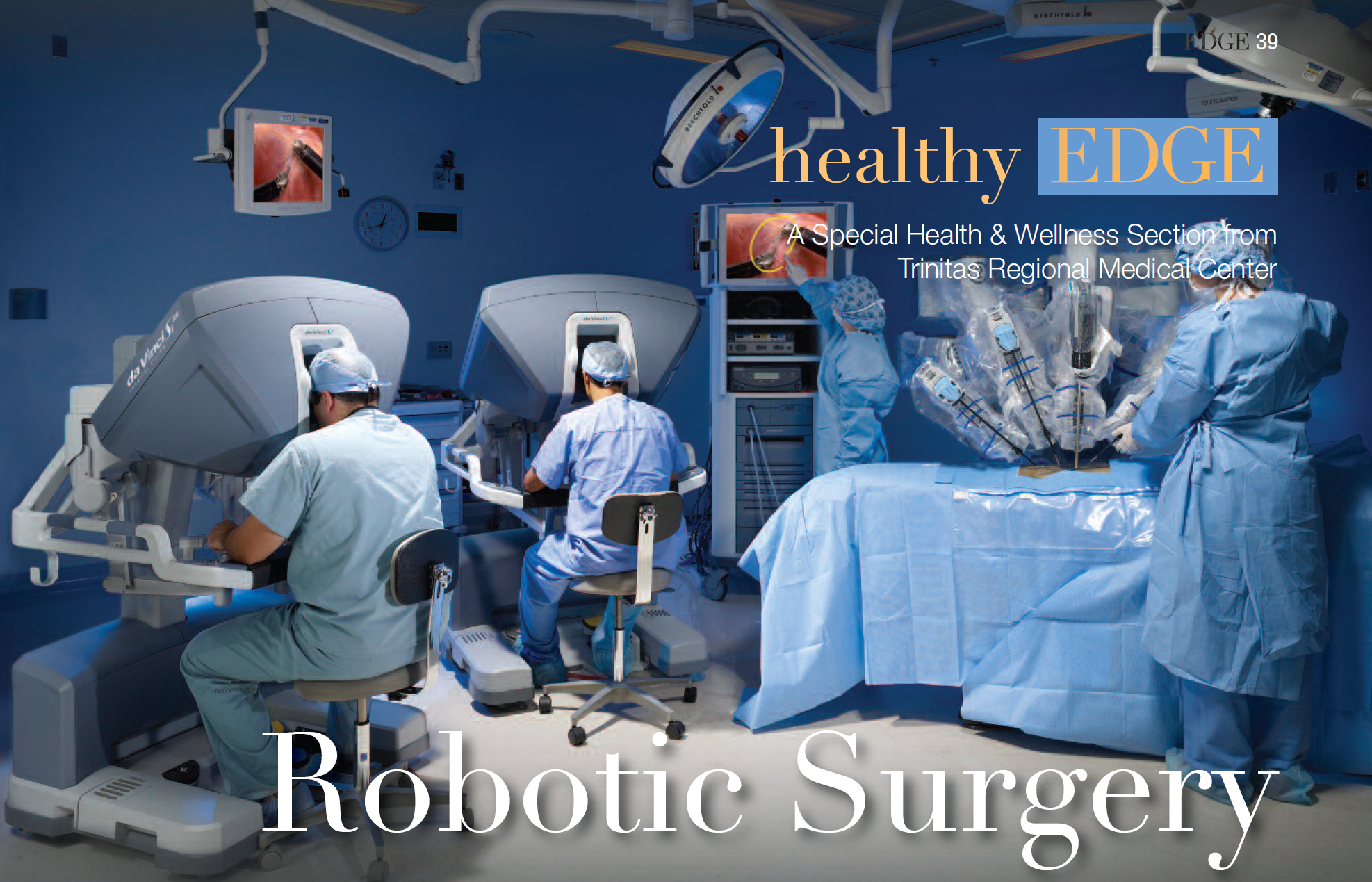- 899 Mountain Ave # 1A Springfield NJ 07081
- (973) 218-6394
- visit website
- 6 Green Village Road Madison NJ 07940
- 201.400.2261
- visit website
ACHIEVING HEALTH NATURALLY
Acupuncture, PT/OT, Chiropractic, Family Counseling
- Infertility
- Migrains
- ADHD/ADD
- Frozen Shoulder
- Carpal Tunnel
- Tennis Elbow
- 555 Passaic Avenue West Caldwell NJ 07006
- 201.400.2261
- visit website
ACHIEVING HEALTH NATURALLY
Acupuncture, PT/OT, Chiropractic, Family Counseling
- Infertility
- Migrains
- ADHD/ADD
- Frozen Shoulder
- Carpal Tunnel
- Tennis Elbow
- 205 Birchwood Ave Cranford NJ 07016
- 908-272-6660
- visit website
- 655 E. Jersey St. Elizabeth NJ 07208
- (908)994-7525
- visit website
Enters a New Dimension

Labib E. Riachi, MD, Interim Chairman of OB/GYN at Trinitas, has the distinction of being one of the busiest robotic surgeons in the Northeast United States. He has completed over 250 robotic cases during the last two years.
Doctors ‘Doubling Up’ with the da Vinci System Two heads are better than one. That old saying holds especially true when the topic is robotic surgery. The da Vinci Surgical System, which enables doctors to sit comfortably at a console and operate remotely with incredible dexterity and precision—and a super-magnified 3-D view—has proved invaluable for a wide range of minimally invasive procedures since arriving at Trinitas Regional Medical Center in 2009. Indeed, during that time, Trinitas has become the busiest hospital on the East Coast for gynecological surgeries using the da Vinci, not to mention the first place in New Jersey where robotic bariatric surgery was ever performed. Beyond the headline-generating benefits of da Vinci, however, is the growing realization that the system‘s dualconsole set-up creates a stunning array of new possibilities both for doctors and patients.
For example, if a complication arises during an operation, a second surgeon can literally “sit in” and assist in his or her specialty without missing a beat. “We also have realized that the two consoles enable us to schedule ‘hybrid’ procedures, where two surgeons work together at once,” says Dr. Labib Riachi, Interim Chairman of the OB/GYN Department at Trinitas. “With a single console, one surgeon would have to step away to allow another surgeon to step in. With two this is not an issue. The benefit to the patient is immeasurable.” Another advantage of having two consoles is in training doctors in robotic applications. “While one surgeon performs a procedure,” Dr. Riachi explains, “the other can appreciate both visually and manually what we are doing. There is also amazing simulator software that enables trainees to teach themselves on a ‘virtual’ patient.”
All of this happens, he adds, in three dimensions—with 10X magnification and 360-degree rotation. This enables doctors to identify structures (such as small blood vessels and nerves) they couldn’t fully appreciate with traditional laparoscopic methods, and also perform suturing more efficiently. According to OB/GYN physician Dr. David Herzog, who uses the system for a number of procedures, including hysterectomies, the da Vinci has truly revolutionized surgery. The movements of the robotic instruments perfectly mimic the surgeon’s hand movements, allowing doctors to cut, cauterize and sew with the same freedom as if the patient were wide open. “The robot has allowed us to perform complex surgeries through tiny incisions which, in the past, would have necessitated large, painful incisions,” Dr. Herzog explains. “These tiny incisions make the recovery process quick and comfortable. So in the case of a hysterectomy, this enables my patients to return to work usually within one week, as opposed to eight weeks after the classic incision procedure.” The technology is constantly improving, he adds. “And that translates into excitement for the doctors and great care for the patients.”
Globetrotting microbes are keeping New Jersey doctors on their toes.
There are some souvenirs you want to bring back from your travels—local handicrafts, beautiful jewelry—and then there are the ones that you don’t. These range from the inconvenient
(Montezuma’s Revenge) to the catastrophic (raging infections). Thanks to ever-adventurous New Jerseyans and newcomers from developing countries, doctors in the Garden State often find themselves treating patients with unusual, challenging-to-diagnose, and even hard-to-cure diseases. By the time they arrive at Trinitas Regional Medical Center, their condition is typically dire. Sometimes, it’s desperate.
The rundown of rare diseases that doctors are currently fighting in New Jersey includes the tropical maladies with which world travelers are now familiar. Interestingly, these are showing up less frequently. Indeed, one would expect that the incidence of, say, typhoid, malaria, and dengue fever might be on the rise. But Dr. Clark Sherer, Chief of Infectious Diseases at Trinitas, says the number of cases of these tropical diseases has remained low for the 20 years he has worked in infectious diseases.
CONFRONTING THE “CLASSICS”
“We’re not seeing more than we’re used to—just a case or two of malaria a year, and a case of dengue fever every few years,” he says.
Dr. Sherer credits the availability of immunizations and preventative medicine with keeping the numbers small. “There are people who go out into the jungle for a week on tour and never get pills to prevent malaria,” he says. “But, if you take the proper precautions regarding vaccinations, food and water, and insect and mosquito control, you can stay healthy.”
When treating some of the rarer cases, like dengue fever and typhoid, the biggest challenge for doctors can be staying abreast of the latest treatments. “Since we see them infrequently, when we make the diagnosis, we have to
familiarize ourselves with any developments in treatment,” Dr. Sherer says. “You don’t feel quite as comfortable dealing with something you only see rarely.”
TB OR NOT TB
Tuberculosis is another disease that people associate with exotic locales. And recently, headlines about drug-resistant strains of TB may have struck fear in people’s hearts. Yet Dr. Sherer says that the incidence of drug-resistant TB is relatively low.
“Tuberculosis has been out there and is still out there, but most of the cases we’re seeing are completely sensitive to treatment,” he maintains.
While the number of cases of TB has grown, Dr. Sherer says there’s little need for the general public to worry. “Most of the cases we’re seeing here are in foreign-born people who are on the younger side. They were exposed in another country where TB is endemic, and later develop active TB.”
BAD BUGS
The most challenging cases the doctors are seeing involve bacterial infections, whether it’s unusual strains of mycobacteria brought back from a trip to a developing country or the homegrown variety of infections that are antibiotic-resistant.
Necrotizing fasciitis—a rapidly spreading infection that can kill off large swaths of soft tissue in a matter of hours— can be especially life-threatening.
“They have to be treated surgically immediately,” says Dr. Morteza Khaladj of The Center for Wound Healing and Hyperbaric Medicine. “We clean and drain the infection. Sometimes we have to remove the bone and large sections of soft tissue. Then patients are treated with IV antibiotics.”
The most troubling new infectious disease—methicillin-resistant Staphylococcus aureus (MRSA)— started right in our own backyard. MRSA began cropping up in hospitals as people with weakened immune systems began to develop
antibiotic-resistant staph infections in the skin, which often spread to surgical wounds, bones, and joints, and even into the major organs. This new strain of Staph infection has grown resistant to many antibiotics. Then a new strain developed—community-acquired MRSA—which can cause skin infections and pneumonia.
“Healthy people are coming into the hospital with overwhelming staph infections, very resistant strains of E. coli and other bacteria—some are resistant to all antibiotics,” Dr. Sherer says. “It’s a big concern—there are not many new antibiotics out there, so our resources are limited in treating some of these infections. MRSA has become a huge issue that we’re dealing with on a daily basis.”

So should you be worried? Most medical experts say that with the proper precautions, you can get through life safely, whether you’re jetting halfway around the world or driving to the local Wawa for a quart of milk.
“I don’t think the average person needs to be concerned,” Dr. Sherer says. “Just follow the CDC’s recommendations regarding the precautions you should take when you travel someplace where you might be at risk, and you should be fine.”







